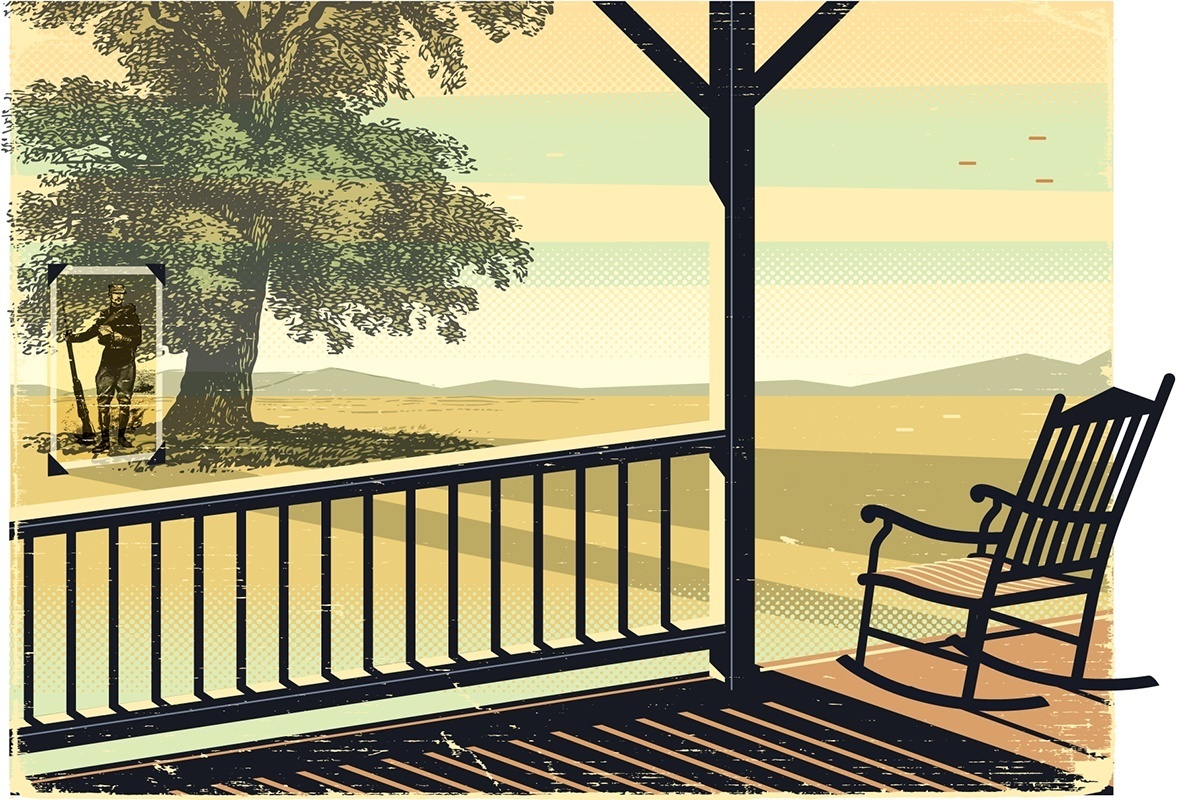In 1938, veterans of the American Civil War gathered in Pennsylvania to acknowledge the 75th anniversary of the Battle of Gettysburg. Some 200,000 people witnessed the event, from June 29 to July 6, including two dozen veterans of the battle itself and 1,845 veterans of the Civil War in general (1,359 representing the Union and 486 representing the Confederacy). It was an amicable commemoration, characterized by goodwill and heartfelt handshakes.
Congress appropriated $1.7 million for the reunion to cover transportation, lodging and meals, as well as the cost of one attendant or caretaker to accompany each veteran. The caretaker was necessary, in part, because the average age of the veterans was 94. The attendees’ quarters in the fields north of Gettysburg College consisted of 3,800 tents connected by boardwalks and wired for electricity.
On July 3, President Franklin Delano Roosevelt addressed the crowd at the unveiling and dedication of the Eternal Light Peace Memorial, which still sits on Oak Hill just northwest of Gettysburg.
His comments were conciliatory. “All of them we honor,” he said, “not asking under which flag they fought then—thankful that they stand together under one flag now.”
James Hamaker, a 94-year-old resident of Aledo, attended the festivities. His wife, Bettie, had passed, and his children had all died. Hamaker’s final wish was to revisit the tree under which he had been shot twice during the Battle of Gettysburg.
Hamaker had served under Stonewall Jackson and then was part of the disastrous Pickett’s Charge on July 3, 1863, during the Battle of Gettysburg. His wounds incapacitated him, and he was captured by Union troops and transported to a hospital.
Hamaker spent the final two years of the war as a Union prisoner and was freed June 20, 1865, two months after the Civil War ended. He returned to his home state of Virginia. He married Bettie 20 years later and moved to the Aledo area in 1894, where he served as the foreman of the Higbee Ranch in East Parker County.
In late June of 1938, Hamaker began his long trip by train to Pennsylvania, looking forward to the gathering. Just before he reached Gettysburg, however, he suffered a mishap, falling from a train berth and breaking his shoulder.
When Hamaker arrived in Gettysburg, an attentive medical staff was on hand. He was sent to Walter Reed Hospital, built on the site of the hospital where he was treated in 1863. The locals did everything they could to make Hamaker comfortable and fulfill his last wish. “If I could get to that tree,” he told them, “I could die happy.”
Medical attendants, fellow veterans and current U. S. soldiers transported Hamaker around the battlefield in an attempt to locate the tree where he was shot, but the terrain had changed too much in the intervening three-quarters of a century, and they were not able to find it. In the end, Hamaker conceded defeat. “I guess I better get home to my rocking chair,” he said. His journey was delayed two weeks for treatment at Walter Reed.
After his return from Gettysburg, Hamaker never fully recovered. In the days and weeks after his ill-fated trip, he made the most of his rocking chair, enjoying the early autumn breezes on the front porch of his home as he attempted to convalesce.
On September 5, 1938, Hamaker’s housekeeper checked on him and said that shortly after he got up from his rocking chair, walked to the bathroom and then returned, she found him motionless. He had survived being shot twice during Pickett’s Charge, but it was his third Gettysburg wound, incurred as he traveled for a peaceful reunion, that dealt the fatal blow, allowing him only a few final days until he died on his porch in Texas.
His passing was noted in newspapers around the state, and he was buried alongside Bettie in Aledo’s Brown Cemetery.
——————-
E.R. Bills is a writer from Aledo.


